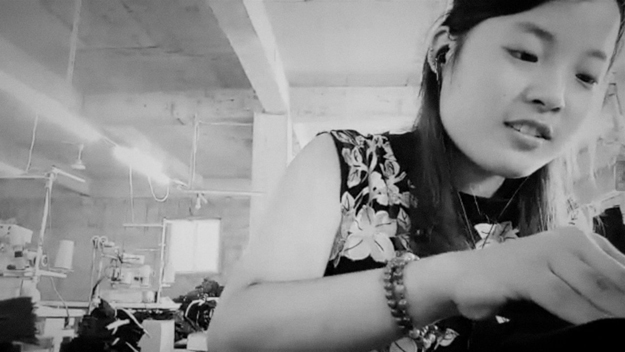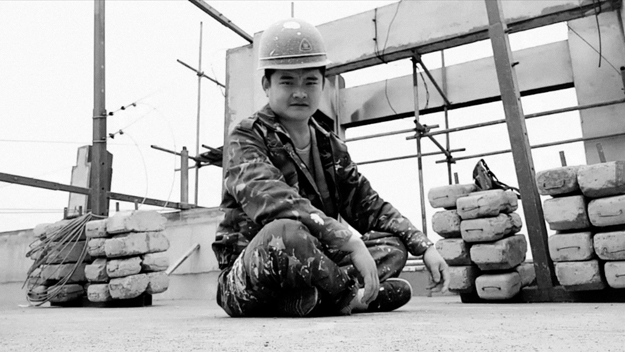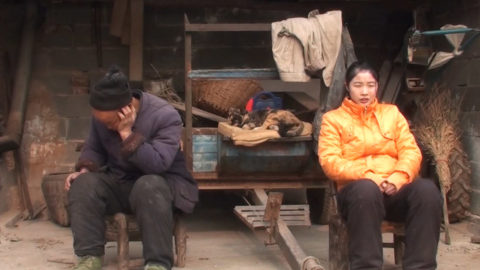Interview: Shengze Zhu
Shengze Zhu’s Present.Perfect. is a temporally bound snapshot of China, showing what has been, with the suggestion that it might not always be this way. The documentary, winner of the Tiger Award at this year’s International Film Festival Rotterdam, portrays contemporary China using footage gleaned from its many live-streaming internet sites. Live-streaming is a huge industry in China, with hosts (‘anchors’) becoming stars. Their performances are commented upon by viewers and rewarded with virtual gifts that can be redeemed for money. Over ten months, Zhu followed a dozen anchors and their common desire to connect with people and gain visibility online. Censorship in China has made live-streaming increasingly difficult, with many virtual showrooms being shut down. In a nod to documentary’s historical claims to truth, the film’s titular grammatical tense signals Zhu’s interest in liveness and recording.
As China’s socioeconomic and political landscape is constantly changing, so too is its virtual space. Many of the film’s protagonists and their sites have disappeared since the film’s making. Entirely composed of found-footage from the internet, Present.Perfect. is pixelated and jumpy—seemingly in contrast with the static, Vermeer-like treatment of space in Zhu’s previous documentary feature, Another Year (2017). But Present.Perfect.‘s characteristic use of the long take and her careful cutting, along with the conversion of found-footage to black and white, demonstrate Zhu’s continued interest in framing everyday life in formally precise ways. [Update: after this interview was conducted, Present.Perfect. won the Tiger Award in competition at IFFR.]

How did work on Present.Perfect. begin?
While living in Chicago, I began watching live-streaming from showrooms all over China. In 2017, there was a tragic incident when a young anchor fell to his death from a high building while he was streaming. I encountered many strange forms of live-streaming myself. People try to catch viewers’ attention, so there’s lots of sexy dancing and people selling products but also bizarre moments… somebody eating live worms, somebody playing invented games on a frozen lake in Northern China. Gradually, I found a smaller number of people who use live-streaming to connect with others while they’re isolated in real, offline, life.
And they became your cast?
Yes. I was drawn to people doing mundane activities, streaming their everyday lives. It took me about six months to find these people. I was anxious because live-streaming shows aren’t stored on online platforms—if I missed a show, I would never see it. At each moment, I had to decide what to watch and whether to record and follow the show long term. I ended up with about 800 hours of footage.
Would anchors disappear sometimes?
Yes. Often anchors get bored and quit streaming. Some struggle to maintain audiences after the initial intrigue ceases. Sites are often taken down by the authorities who impose and revise censorship laws. In Present.Perfect. we see anchors reach off-screen for a cigarette and leave their phone recording while they disappear to the restroom, because showing these activities is prohibited now. The anchor we see cross-dressing and dancing in public was later fined.
It was interesting to deduce what viewers’ typed comments were from the way anchors responded.
Anchors get to know their fans, greeting them when they log into the showroom and thanking them for comments and gifts. For one thing, it’s in the anchors’ interests to be friendly with viewers because their gifts have monetary value. Anchors have to repeat their life stories day after day. Some make friends with viewers and enjoy interactions that they couldn’t engage in offline. The anchor in the film who is thirty but has not gone through puberty describes his very solitary life before the process of live-streaming encouraged him to get out of the house. Thanks to streaming, he began filming outdoors, and traveled to a nearby province to find a job. I don’t know what happened to him because he stopped streaming and deleted his account. His online friend, the burn victim who we see in the film video-calling him, didn’t know where he had gone either. In his showroom, viewers left messages asking his whereabouts.

The use of the word “showroom” for live-streaming got me thinking about Present.Perfect. as a series of chamber pieces. This reminded me of Another Year, which comprises 13 very long takes shot inside a family’s home. In Present.Perfect. too, we get a sense of the anchors’ rooms and the lives they lead there, by lingering in long takes. With the long take also comes the cut. Can you talk a bit about that?
The cut, yes. The editing of these two films is similar because of the long take, which I use for durational observation. The long take is also a defining feature of live-streaming, which requires a great investment of time for maker and viewer alike. My decision of when to cut is about creating a rhythm with these long takes. I divided Present.Perfect. into four chapters, to modulate the film’s pace. The first section introduces various anchors in comparatively short takes, whereas the central sections are longer. I wanted to give subjects as long as they needed to deliver whatever it was that they wanted to say.
From its numbered sections to the periods in its title, the film seems to have its own grammar and punctuation…
I numbered the sections rather than titling them, to avoid imposing too much of my own interpretation on the footage. Present.Perfect. is a reference to grammar and a meditation on cinema’s function of recording the past and live-streaming’s function of broadcasting the present.
Distinct themes emerge during the course of the film, including gentrification, and the precarity of the lives of disabled people, factory workers and single mothers. Did you intend to explore these issues from the outset?
Initially, I was simply absorbing what I saw online. Later, I realized that my interest was in how people who feel isolated in real life can find support and community online. Through streaming, they overcome shyness. In the case of people in the film who have disabilities, what interested me was the visibility that streaming offers otherwise marginalized individuals.
Why the decision to make Present.Perfect. black and white?
Turning all the material into black and white was one way of organizing video shot at various resolutions and color settings into a visually cohesive whole. Moreover, black and white detaches us from both real virtual worlds, creating for the film its own subjectivity. I come from a journalism background that made me question documentary’s claims to objectivity and truth. I’ve come to see that non-fiction filmmaking is less about reality than it is the complex relationship between reality and its constructed representation.
Becca Voelcker is a PhD student in Film and Visual Studies at Harvard University, and a freelance film critic and programmer.






